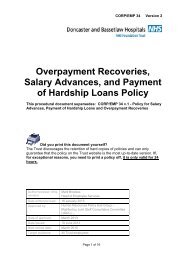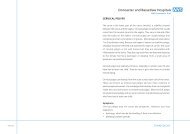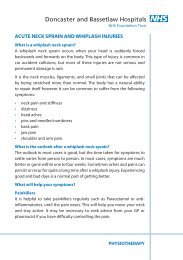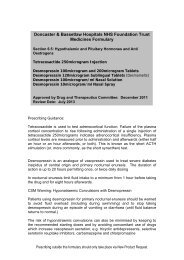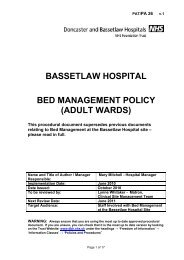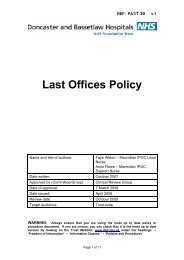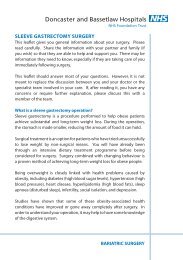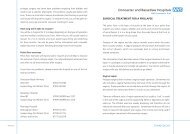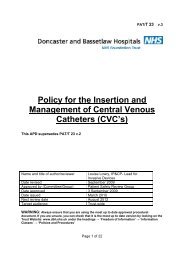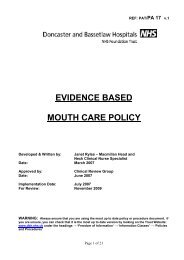VARIANT CREUTZFELDT-JAKOB DISEASE (vCJD) AND ...
VARIANT CREUTZFELDT-JAKOB DISEASE (vCJD) AND ...
VARIANT CREUTZFELDT-JAKOB DISEASE (vCJD) AND ...
Create successful ePaper yourself
Turn your PDF publications into a flip-book with our unique Google optimized e-Paper software.
PAT/IC 4 v.3<br />
injuries and the safe disposal of sharps (PAT/IC 8 - Policy for the Safe Use and Disposal of<br />
Sharps and contaminated waste CORP/HSFS 17 - Waste Policy). Single use disposable<br />
equipment should be used wherever practicable.<br />
Samples from patients with or “at increased risk” of CJD/<strong>vCJD</strong> should be marked with a<br />
“Biohazard / Danger of Infection” label and the laboratory informed in advance that a<br />
sample is being sent. TSE agents are classified as Hazard Group 3 – see PAT/IC 11 –<br />
Collection and Handling of Pathology Specimens, for appropriate packaging and transport<br />
of pathology samples.<br />
Guidance for pathologists and pathology laboratories handling tissues from patients with,<br />
or at risk of, CJD or <strong>vCJD</strong> can be found at “Transmissible spongiform encephalopathy<br />
agents : Safe working and the prevention of infection” - Annex K. Department of Health<br />
7. SPILLAGES<br />
Standard infection control precautions should be followed for any spillages (including blood<br />
and CSF), which should be cleared up as quickly as possible, keeping contamination to a<br />
minimum. Disposable gloves and an apron should be worn. For spillages of large volumes<br />
of liquid, absorbent material should be used to absorb the spillage. Standard disinfection<br />
for spillages (eg. 10,000ppm chlorine-releasing agent) should be used to decontaminate<br />
the surface after the spillage has been removed. It should be noted that none of the<br />
methods currently suggested by WHO for prion inactivation are likely to be fully effective.<br />
Any waste (including cleaning tools such as mop heads and PPE worn) should be<br />
disposed of as clinical waste – see below (PAT/IC 18 - Policy for Spillage of Blood and<br />
Other Body Fluids, CORP/HSFS 17 - Waste Policy).<br />
8. CLINICAL WASTE<br />
The ACDP TSE Working Group have considered the disposal of clinical waste, and have<br />
agreed that tissues, and contaminated materials such as dressings and sharps, from<br />
patients with, or “at increased risk” of CJD/<strong>vCJD</strong> should be disposed of as in the following<br />
table:<br />
Diagnosis of CJD High or medium risk Low risk tissue and body fluids**<br />
tissue *<br />
Definite Incinerate Normal clinical waste disposal<br />
Probable Incinerate Normal clinical waste disposal<br />
“At increased risk” Incinerate Normal clinical waste disposal<br />
* - See Table 3 below and Transmissible Spongiform Encephalopathy Agents: Safe working<br />
Practice ant the Prevention of Infection - Annex A1<br />
** - Tissues and materials deemed to be low risk include body fluids such as urine, saliva, sputum,<br />
blood and faeces. Blood from <strong>vCJD</strong> patients is considered low risk except when transfused in large<br />
volumes<br />
Page 7 of 22



